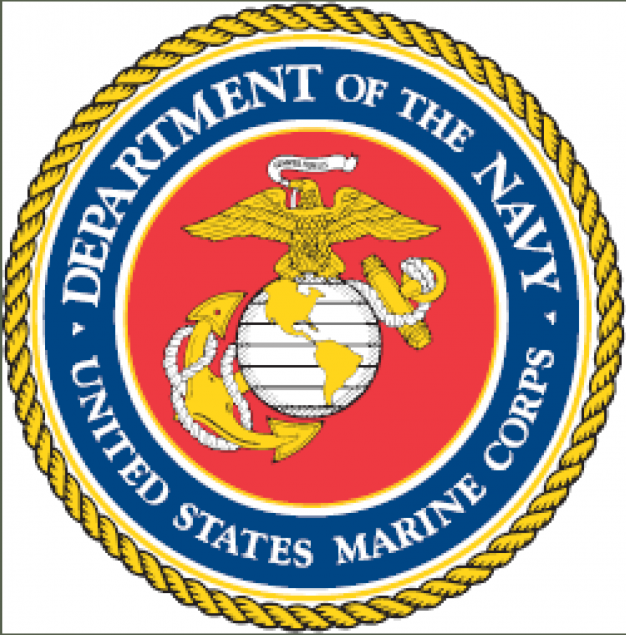
Maritime Domain Awareness: An entry point for Force Design 2030 implementation
Posted on: June 08,2020By Col Jonathan A. Haynes
In his recent statement on Force Design 2030, the “Case for Change,” the Commandant of the Marine Corps, General David H. Berger, presented the next challenge as “fully analyzing and testing” the concepts of Force Design 2030.[1] This article presents an approach to Force Design 2030 that could facilitate implementation through Maritime Domain Awareness (MDA) so testing and analysis could move more quickly.
One of the immediate challenges for implementing the concepts of Force Design 2030 is obtaining the support of Congress. Fortunately, congressional authorization already exists if the concepts of Force Design 2030 are considered within the framework of Maritime Domain Awareness. Congressional support has been established for MDA and funds have been authorized through the Indo-Pacific Maritime Security Initiative[2] (formerly called the South China Sea Initiative, then the Southeast Asia Maritime Security Initiative[3]). In order to provide context for these iterations of MDA support, a brief review of MDA history in this region may be helpful.
The 1994 United Nations Convention on the Law of the Sea (UNCLOS) established Exclusive Economic Zones (EEZs) 200 nautical miles from national coastlines. China’s “nine-dash line” territorial claims overlap with the EEZs of five Southeast Asian nations — Brunei, Indonesia, Malaysia, the Philippines, and Vietnam. Due to disputed claims in the South China Sea (SCS), the United States took steps to improve Maritime Domain Awareness in the EEZs through the National Defense Authorization Act (NDAA) for FY2016. This South China Sea Initiative was initially for the Philippines and Vietnam as part of a DOD five-year $425 million authorization. In February 2017, the USS Carl Vinson strike group began Freedom of Navigation Operations (FONOPS) in the SCS challenging maritime claims by Asian countries that the United States considered excessive. The NDAA for FY2017 re-designated these actions as the Southeast Asia Maritime Security Initiative. This expanded U.S. security cooperation to Japan, Indonesia, Malaysia, and Singapore and garnered support for Japanese patrols in the SCS and a multinational maritime patrol of the SCS by members of ASEAN.[4]
Based on the framework established by the Indo-Pacific Maritime Security Initiative, the Marine Corps has an excellent starting point for implementing Force Design 2030 concepts along the lines of Maritime Domain Awareness. During his tenure as Chief of Naval Operations, Admiral Michael G. Mullen defined Maritime Domain Awareness as the “effective understanding of anything associated with the maritime domain that could impact the security, safety, economy, or environment of the United States.”[5] The U.S. Navy in its role as the DOD Executive Agent for MDA has identified three components that make MDA effective: 1) early identification of potential threats; 2) integrated intelligence, law enforcement information, and open-source data; and 3) information sharing and cooperation with both public and private sectors of allies and partners.[6] These tenets of effective MDA nest well with the concepts of Force Design 2030 in which the Commandant of the Marine Corps has called for “solutions for operating…in smaller units on smaller ships, distributed over vast distances but linked by command and control systems and doctrines that allow…relevant, lethal effects in deterrence and in war.”[7] Embracing the components of the MDA frame of reference will enable implementation of these Force Design 2030 concepts.
Just as Maritime Domain Awareness has provided a framework for counterdrug operations in SOUTHCOM and counter-piracy operations in CENTCOM, MDA provides a framework for UNCLOS monitoring in INDOPACOM. Paralleling the three components of MDA above, Force Design 2030 provides an opportunity for a Navy-Marine Corps partnership in an information environment that is linked with allies and partners in the region. First, early identification of potential threats to UNCLOS compliance is a sea-based endeavor. The Navy-Marine Corps team could partner in “smaller units on smaller ships” to conduct these monitoring operations. Second, command and control systems linked over vast distances would build upon existing Navy-Marine Corps information systems in both classified and unclassified domains. Finally, information sharing would engage U.S. allies and partners in the region, effectively accomplishing the Commandant’s goal of “working out effective responses to…gray zone operations and assuring our regional partners that we will…support them.”[8] These international relationships have been established through existing initiatives and are being developed along the four lines of national power – diplomacy, information, military, and economics. Using Maritime Domain Awareness as a framework for Force Design 2030 will allow concepts to be tested and analyzed through military exercises in the region. Testing and analyzing Force Design 2030 will provide a catalyst for diplomatic engagement, economic development, and information partnerships.
Force Design 2030 is an ambitious and innovative plan that could propel the United States Marine Corps into a new era of support to national security. Implementing within the framework of Maritime Domain Awareness will provide a critical entry point for testing and evaluation of Force Design 2030 concepts. Working in partnership with the United States Navy will amplify the strengths that both services bring to the Navy and Marine Corps team. Maritime Domain Awareness also provides a multi-faceted approach to work with allies and partners in the region. For these reasons Maritime Domain Awareness should become the parallel concept for Force Design 2030 as innovation and implementation continue.
[1] David H. Berger, “The Case for Change,” Marine Corps Gazette (June 2020), 12.
[2] Gregory B. Poling, “Congress fires a warning shot to China with defense budget,” The Hill (August 6, 2018)
[3] South China Sea Disputes: Background and U.S. Policy (Washington, DC: Congressional Research Service, February 23, 2017), 2.
[4] Ibid.
[5] Michael G. Mullen, Maritime Domain Awareness Concept (Washington, DC: Department of the Navy, May 29, 2007), 4.
[6] Jonathan W. White, Advancing Maritime Domain Awareness (MDA) for the Fleet and the Nation (January 16, 2014) https://navylive.dodlive.mil/2014/01/16/advancing-maritime-domain-awareness-mda-for-the-fleet-and-the-nation/(Accessed May 24, 2020), 1.
[7] Berger, “Case for Change,” 12.
[8] Ibid.





